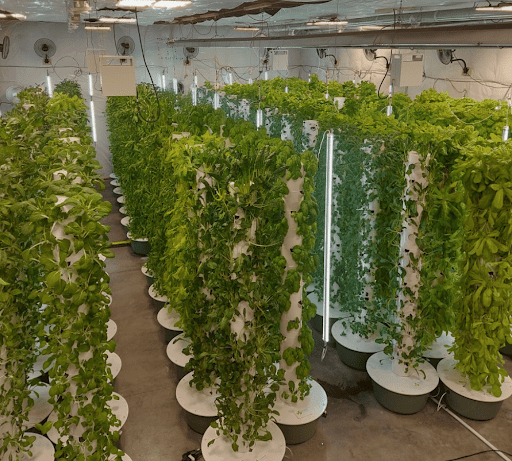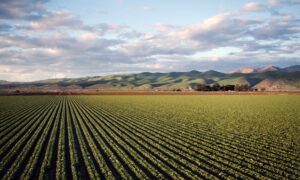Learn how modular design, automation, and sustainable planning can transform small-scale innovation into commercial growth.
In recent years, vertical farming has emerged as one of the most promising innovations in agricultural technology. Designed to produce high yields in limited space, vertical farming towers offer a sustainable alternative to traditional soil-based agriculture. By stacking crops in controlled environments, these systems reduce land use, optimize water efficiency, and enable consistent, pesticide-free production year-round.
Yet, despite these advantages, scaling remains a persistent challenge. Many promising pilot projects struggle to achieve profitability once operations expand. High energy demands, technological complexity, and crop-specific limitations continue to shape the conversation around what makes vertical farming commercially viable.
1. The Promise and Reality of Vertical Farming Towers
The appeal of vertical farming is straightforward: grow more with less. Using advanced hydroponic systems, plants receive nutrients directly from water rather than soil, allowing for precise control of growing conditions. Towers enable farms to maximize vertical space, reducing environmental impact while increasing yield per square meter.
However, the transition from small research facilities to large-scale production is not as seamless as it appears. While vertical farming demonstrates clear sustainability benefits, profitability depends on how efficiently systems can be powered, monitored, and managed. According to the U.S. Department of Agriculture (USDA), controlled environment agriculture can use up to 90% less water than traditional farming, but energy consumption and maintenance costs remain critical barriers to scale.
2. High Operational Costs and Energy Demands
The single largest expense in most vertical farms is energy. Lighting, temperature regulation, and nutrient delivery all require constant power. As operations grow, so do electricity costs, particularly in regions with variable energy pricing.
Innovations in LED lighting, smart climate control, and renewable energy integration are helping close the gap. For example, solar-assisted farms and energy recovery systems can offset up to 30% of operational costs when properly implemented.
Modern vertical farming tower systems incorporate these improvements through modular, sensor-driven designs. These allow farms to monitor and adjust light intensity, airflow, and irrigation in real time — minimizing waste while maintaining optimal growing conditions. By combining automation with sustainability, advanced vertical systems are bringing energy efficiency closer to economic feasibility.
3. Scaling Challenges: From Pilot Projects to Commercial Systems
Scaling a vertical farm involves more than adding towers or expanding floor space. As systems grow, new complexities emerge in logistics, infrastructure, and labor management. Small facilities rely on close manual oversight, but commercial-scale operations require integrated software and automation to maintain precision at scale.
Another challenge lies in infrastructure costs. Expanding requires specialized HVAC systems, water filtration units, and backup energy solutions that can handle higher loads. Without proper planning, these investments can erode profitability before yields stabilize.
Automation and modularity are key solutions. Many industry leaders now design facilities that can expand incrementally, using standardized components to maintain consistency. As reported by AgFunderNews, modular architecture allows companies to manage risk and capital expenditure while testing scalability in controlled phases.
4. Managing Technical Complexity and Skill Gaps
Vertical farming is a convergence of agriculture, engineering, and data analytics. Each tower acts as a micro-ecosystem, requiring precise management of nutrients, light, and airflow. For new operators, this technical learning curve can be daunting.
Recruiting skilled technicians, data analysts, and horticultural specialists is a growing challenge for large-scale operations. To address this, farms are increasingly relying on digital monitoring systems that use AI and machine learning to automate adjustments. These technologies allow operators to detect anomalies early — such as pH imbalances or lighting malfunctions — and respond before they affect yield.
Educational institutions like Cornell University’s Controlled Environment Agriculture Program emphasize that automation and staff training are equally important. Effective scaling depends not only on technology but also on the human expertise guiding it.
5. Crop Selection and Biological Limitations
Not every crop thrives in a vertical environment. While leafy greens, herbs, and strawberries perform exceptionally well, root vegetables and grain crops are less suited to tower configurations. Understanding the biological limitations of the system is essential for consistent profitability.
Commercial farms that specialize in high-value, short-cycle crops often achieve better returns due to faster harvest turnover and reduced waste. However, diversity remains a strategic consideration — emerging hybrid systems now combine vertical towers with aquaponics or aeroponics to expand crop variety without compromising space efficiency.
The Food and Agriculture Organization (FAO) reports that tailored crop selection and environmental optimization can increase yields by up to 35% while reducing water and nutrient use. Aligning tower design with specific plant biology is therefore critical to achieving commercial scalability.
Conclusion
The vertical farming industry stands at the intersection of innovation and practicality. Its long-term success depends on addressing the operational realities of scaling — managing energy costs, building technical expertise, and aligning crop selection with system capabilities.
With the right combination of smart design, renewable energy integration, and automation, vertical farming towers have the potential to transform agriculture from the ground up — quite literally. For forward-thinking organizations, the challenge isn’t whether vertical farming works; it’s how to make it thrive at scale.
Additional Resources
Explore modern advancements in commercial hydroponic systems designed for scalability, sustainability, and commercial yield optimization.
- Asterix Foods emerges from stealth to unlock ‘2nd wave’ of animal-free proteins in plant cell culture | AFN
- In focus Hand in Hand for Better Foods and a Better Future | Food and Agriculture Organization of the United Nations
- We are educating and harvesting for the future – one generation at a time | Willow Brook Farms



































